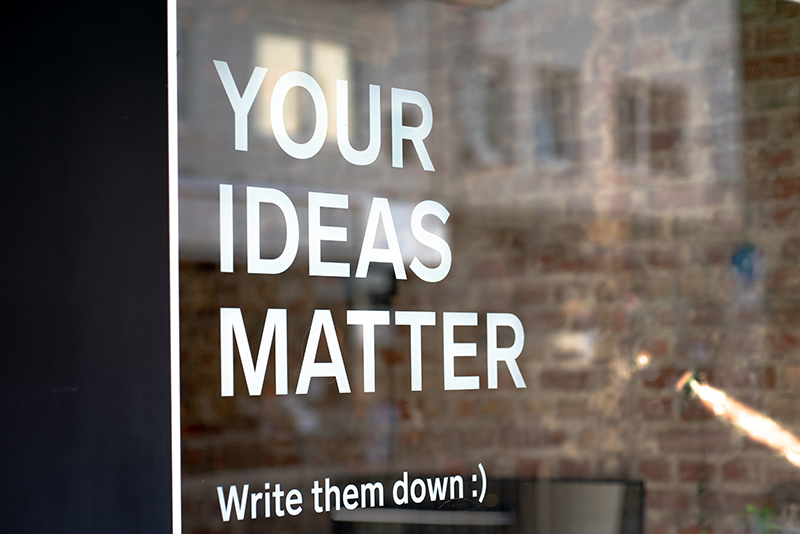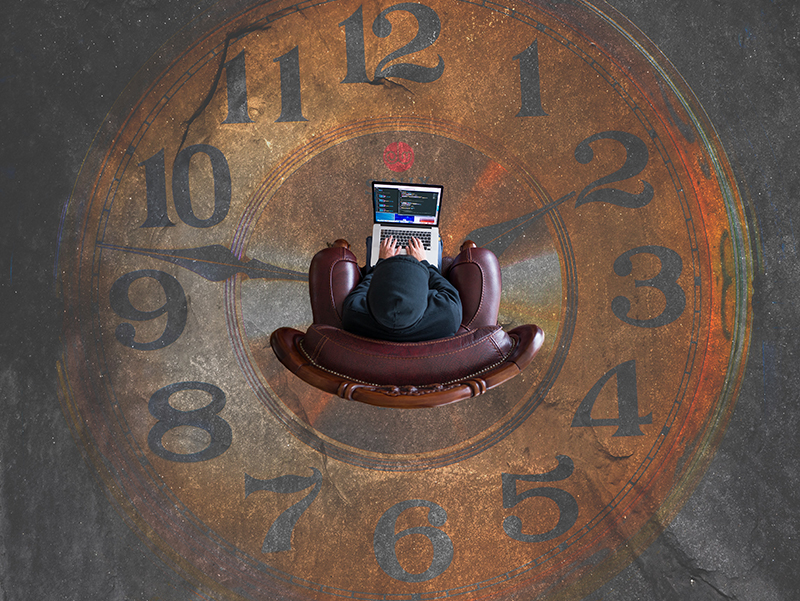Career & Entrepreneurship
The Design Process – Dos and Don’ts – Part 1

Mika Baumeister on www.unsplash.com
Being a self-employed graphic designer provides the opportunity to regularly work with small business owners. I’ll be frank, this will not make me rich, but is simply very gratifying and regardless of my perception, the money a small business invests in my services is significant to them. So, a must-have when investing in design services, is value for money.
I have lost count of the amount times new clients have come to me after having had a disappointing experience working with a previous designer. Keep reading and I promise you’ll be a bit more successful next time around.
First lesson, as soon as you hire a designer, consider yourself a team. Whether you like it or not, you both have your parts to play and have to invest a certain amount of time and energy into achieving the best results. Then just follow these tips…
Have an open mind
I love enthusiastic clients, they are the best type! Passion from both sides can achieve amazing results. However, the majority of clients I encounter do not know what a creative brief is, let alone can write one. So it is my job to translate the needs of my client from what they convey to me.
For those who struggle to explain themselves a sketch they have prepared can be of value, however if you go guns blazing providing a designer with a drawing of precisely what you want, you risk them giving you exactly that. Which is not necessarily what you actually need.
The honest truth, designers have to be careful when picking our battles with clients because time is money and if we aren’t getting paid by the hour (which is often the case when I work with small businesses) it’s a double-edged sword as to whether it is financially viable to debate with a strong-willed client. Above all, we want our clients to have the best solution for their business, so coming to us with an open-mind allows us to achieve that. There is no reason to assume we might not agree with your ideas, but there is a good chance we’ll have a few suggestions on how it can be enhanced and elevated to another level. That’s the added value of paying a professional.
A few years back I briefed two kitchen companies to present an offer for our new fitted kitchen. Company A gave me an offer for exactly what I asked for. The company B took the initiative to give me two offers, one for exactly what I asked for and then a second alternative concept. The designer behind the second offer had thought about the bigger picture and came up with a design that would save on labour costs and be more user-friendly. With both offers being almost identical in price, I went with company B, simply because the designer demonstrated the value he was adding and I respected his expertise and experience. His solution proved to be spot on, even though it was not strictly what I asked for.
You are paying a premium for a professional designer and what comes with that is expertise and a hell of a lot of experience. Not merely designing logos or brochures, but understanding the practicalities of implementing design in day-to-day business activities. How can it contribute to building your brand, saving you money, and then being practical and user friendly at the same time?
If a client asks for something very specific, whilst it sounds like a good idea to them, to us it can end up being problematic because they haven’t thought about their logo in context.
How will this logo appear on both printed and digital applications, and regardless of scale? Such as, on your website when viewed on a mobile device or as an icon for your social media profile? For me your visual identity not just your logo needs to work across everything. So, if you go to a designer with very fixed ideas and not an open mind, your premium for going to a professional is wasted. You are limiting their ability to produce branding that is also practical. If you are a small business owner this is vital as you do not have budget for design support on a regular basis.

Kevin Ku on www.unsplash.com
Deadlines
Avoid a slap dash solution. You may want your logo to have been ready yesterday, but do you really need it that fast? If you want it done quickly be warned it could cost you more money later to change it. Let your designer guide you through the process and avoid skipping steps to get it done fast. Giving us a little bit more time to talk to you and translate that into well thought out ideas. It’s worth it. Also, appreciate that design solutions can also vary significantly. Producing high quality artwork can be very cumbersome and time consuming at times.
Consider that if you have invested in a new website or rebranding and it has taken 1 or 2 months to realise it – what is another week or 2, so you can triple check everything and actually create a roll-out plan to launch it. This is where team work comes into play. You should be ideally working on this whilst your designer is working. Do not be too hasty and share your new logo with the whole world before your website is actually live. Do this and you really miss an opportunity to build some suspense with your audience and go live with a bang, because you only get one chance to launch and make it big.
About the Author:
Hayley Milne Payne is a passionate, classically-trained Graphic Designer, originally from London. She completed her Masters in Creative Arts Business and got her first break working in the marketing team for Chelsea Football Club. She relocated to Switzerland in 2007 and worked as a brand manager and Creative Services Manager at top sports marketing agencies. She is now an independent creative designer, consultant and technical trainer.
www.craftychameleon.ch or follow her on Instagram and Facebook. http://www.linkedin.com/in/hayleymilnepayne



